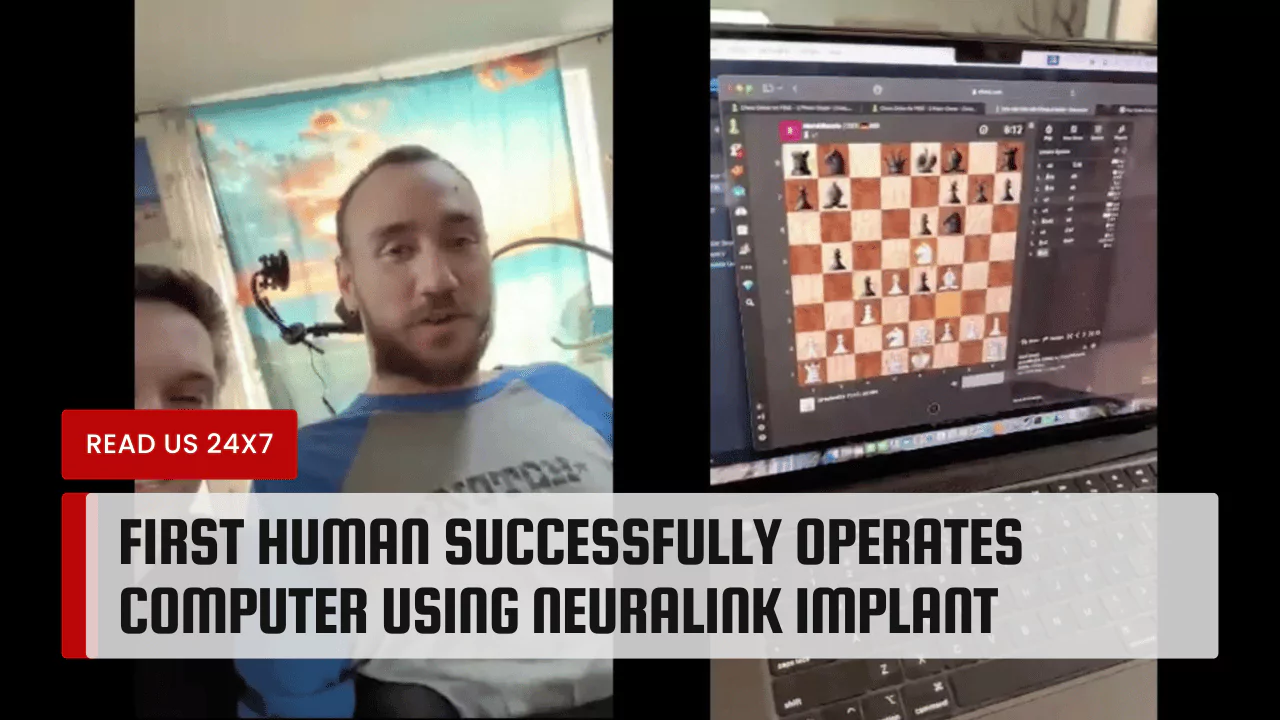The dawn of a new era in human-computer interaction has arrived as the first individual successfully operates a computer solely through the power of their mind. This remarkable achievement is made possible by the revolutionary Neuralink implant, developed by Elon Musk’s company, Neuralink.
Background of Neuralink Implant
Neuralink, a company founded by Elon Musk, ‘s developing a brain-computer interface (BCI) called the N1 implant. Here’s a quick rundown of its background:
Purpose:
- Restore sensory and motor function for people with paralysis or neurological conditions.
- Enhance human capabilities by allowing control of external devices with thought.
- Potentially improve our future experience of the world.
Current Stage:
Animal Testing: Neuralink has conducted tests on animals like monkeys and pigs. There have been criticisms about the ethical treatment of animals during these experiments.
Human Trials: On January 29, 2024, Elon Musk announced that Neuralink had successfully implanted a device in a human and that the patient was recovering. The first human to receive the company’s brain implant was a 29-year-old man who had been paralyzed from the shoulders down for eight years after a diving accident. The implant includes 1024 electrodes distributed across 64 threads and is powered by a small battery charged wirelessly from the outside.
Neuralink had previously anticipated starting experiments with humans in 2020 but has since moved that projection to 2023.
Technical Details:
- The N1 implant is a small, fully implantable device.
- It’s designed to be biocompatible and wirelessly charged.
- Surgeons use a specialized robot to implant the N1 in the brain.
You can find more information on the Neuralink website or watch a video of the first patient using the implant https://neuralink.com/.
Quadriplegic Gamer’s Experience
The recent breakthrough comes to light through the testimony of a 29-year-old quadriplegic named Nolan Arbaugh. Following a tragic diving accident that left him paralyzed from the shoulders down, Arbaugh became the first human recipient of the Neuralink implant. Through this innovative device, Arbaugh has regained the ability to control a computer mouse and execute commands using only his thoughts.
Arbaugh’s experience with the Neuralink implant has been nothing short of transformative. Despite his physical limitations, he can now engage in activities such as chess and Civilization VI on his PC with remarkable precision and ease. This newfound freedom has brought immense joy and empowerment to Arbaugh, who describes himself as “freaking lucky” to be part of this groundbreaking endeavor.
Potential Risks and Concerns
While the success of Neuralink heralds a new frontier in human augmentation, it also raises ethical considerations and potential risks. Critics have voiced concerns about the implications of merging human brains with technology, citing issues related to privacy, autonomy, and the potential for misuse.
Furthermore, the long-term effects of Neuralink implants on the human brain remain largely unknown. As the technology continues to evolve, it is crucial to conduct rigorous research to ensure the safety and well-being of individuals who opt for such implants.
In conclusion, the achievement of the first human successfully operating a computer using a Neuralink implant marks a significant milestone in the realm of neurotechnology. While the journey towards integrating humans and machines is fraught with challenges, the potential benefits for individuals with disabilities are profound. As we venture further into this uncharted territory, we must proceed cautiously, mindful of the ethical considerations and potential risks involved.



